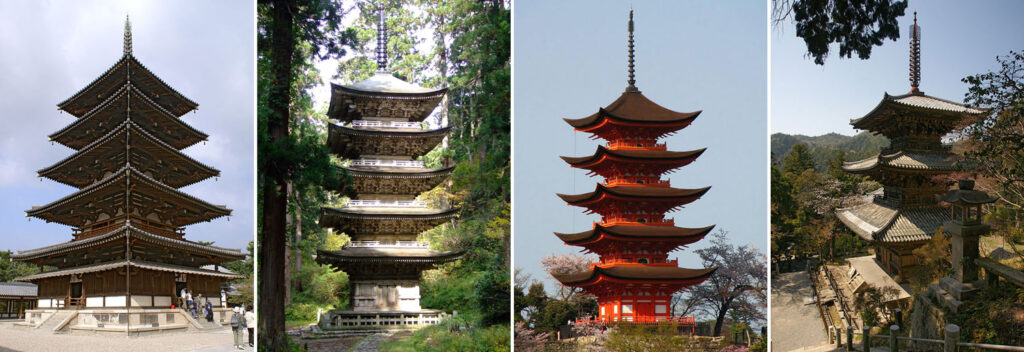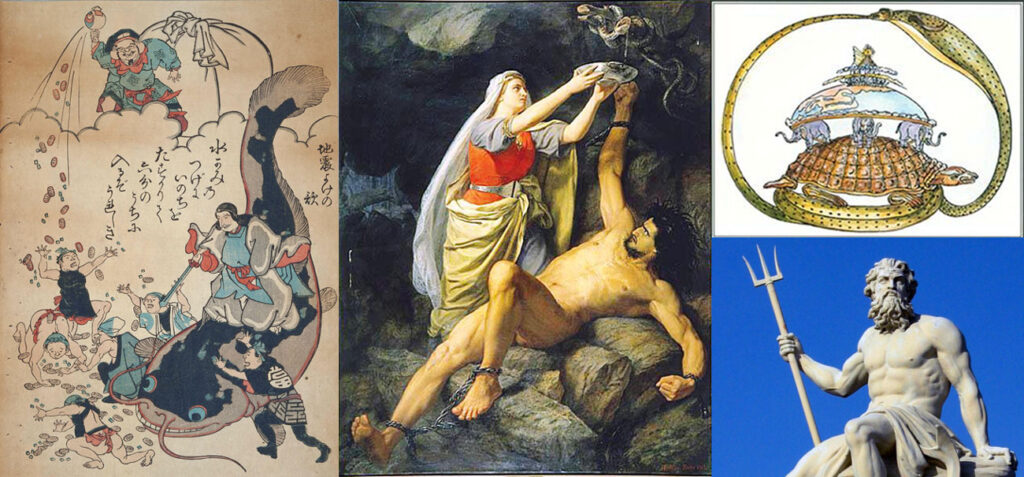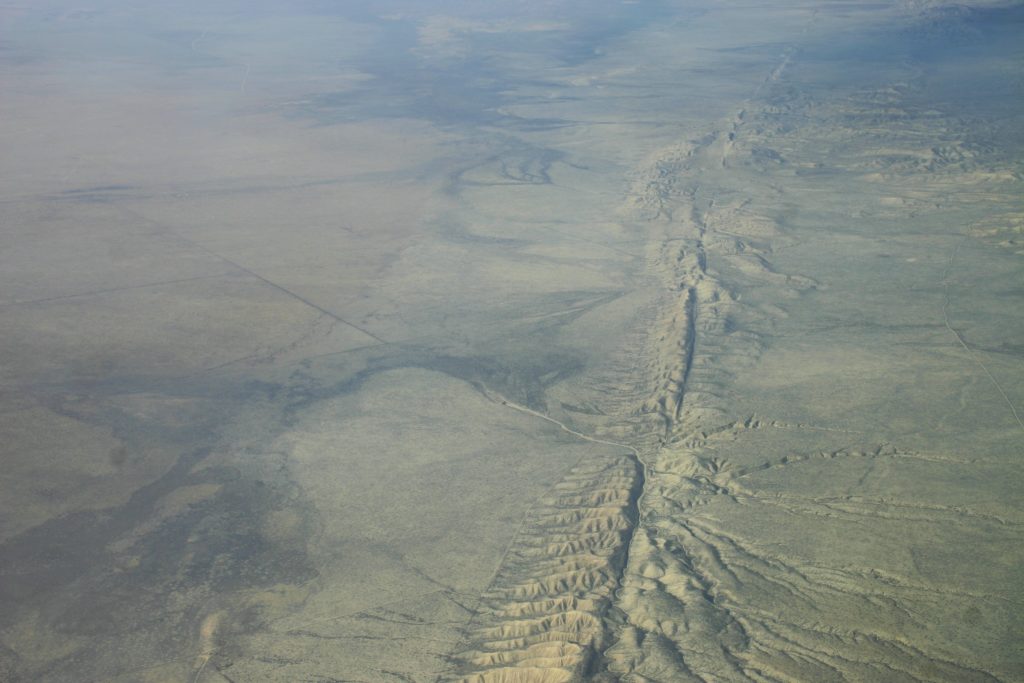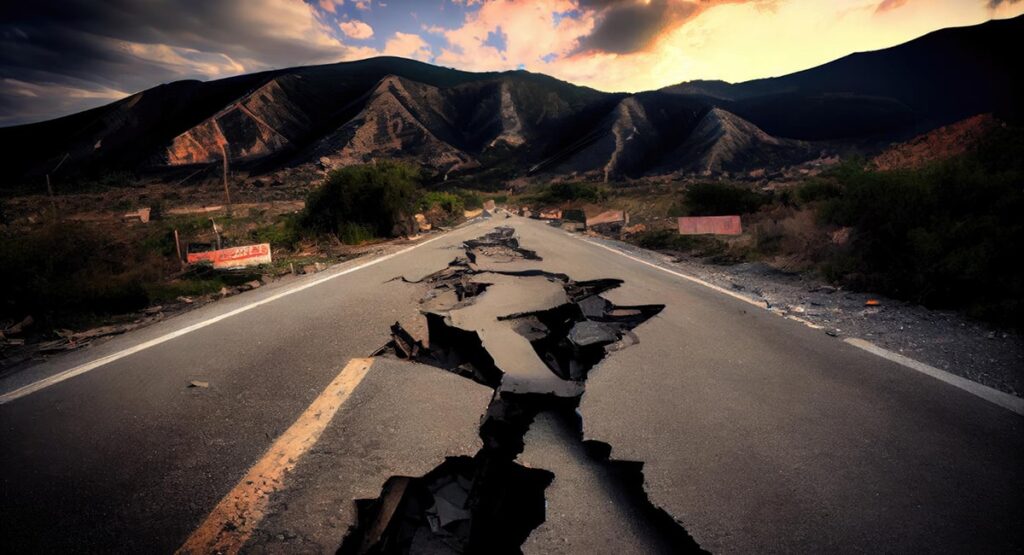- Victims: Earthquakes kill around 8,000 people every year and are estimated to have killed around 13 million people in the last 4000 years
- Length of day: Earthquakes can slightly change the length of the day because they slightly change the Earth’s axis, pulling its mass closer to the core. This increases the Earth’s rotation speed and shortens the day. This is the same principle figure skaters utilize when they pull their arms in close to their body to rotate faster in a pirouette
- Duration: An average earthquake lasts about 1 minute. The 2004 Sumatra earthquake had the longest documented duration of 10 minutes (500 – 600 seconds)
- Power: The most powerful earthquake in recent history (Chile in 1960) had a force equivalent to 2.7 gigatons of TNT. In comparison, a large hand grenade has a force of 30 grams of TNT, a stick of dynamite 1.1 kg of TNT and the atomic bomb over Hiroshima 16 kilotons of TNT (although it is wrong to compare earthquakes to nuclear bombs, as nuclear bombs explode above the earth’s surface and therefore do not shake the ground like earthquakes, which occur below the earth’s surface)
- Warning signs: One of the warning signs of an earthquake is that streams, canals, lakes, etc. give off a strange smell, which is caused by gases being released underground. The temperature of the water can also rise. Some scientists also believe that animals can sense earthquakes before we do – either because they are more sensitive to the smaller tremors or because they can sense changes in electrical signals caused by the movement of underground rocks
- First earthquake detector: Almost 200 years ago, Chinese astronomer and mathematician Zhang Heng (78 – 139) invented the world’s first earthquake detector. It could detect earthquakes more than 600 kilometers away
- Volcanic eruptions: Earthquakes can also trigger volcanic eruptions, such as Mount St. Helens in 1980 and Mount Etna in 2002
- Avalanche: Earthquakes can also trigger avalanches – and the worst avalanche in world history was triggered by an earthquake in Peru in 1070. The avalanche was an 850-meter-wide wave of ice, mud and rock that slid down Mount Huascarán at 400 km per hour. It wiped out entire villages and killed more than 18,000 people
- Aftershock: Aftershocks occur after an earthquake and are a sort of adjusting effect of the earthquake, as it takes time for the earth’s crust to settle. Large earthquakes can have aftershocks that last for years
- Moonquake: Earthquakes on the moon are called ‘moonquakes’. They occur less frequently and are not as powerful as earthquakes on Earth. Moonquakes also occur very deep in the moon (about halfway between its surface and center). It is believed that moonquakes are related to the moon’s varying distance from the Earth (tidal effects)

Japanese pagoda temples are well known for their ability to withstand earthquakes, mainly due to their flexible structure that allows them to “sway” with the tremors of the earthquake. The flexibility of pagodas is mainly due to the fact that they: 1) are made of wood, 2) are built without the use of nails or nails and 3) are constructed in layers that can “slide” on each other and allow the building to sway. Pagodas are typically over 1000 years old and have been proven to withstand the earthquakes of time. Today, Japan is one of the leading nations in earthquake-proofing buildings
How do earthquakes happen?
Earthquakes are most often caused by geographical reasons, but can also occur as a result of landslides, volcanic activity, nuclear tests, landmine testing, etc.
Most earthquakes probably occur as a result of the Earth’s continental plates moving (plate tectonics is one theory). The plates move less than 17 cm per year, but a movement of just 20 cm is enough to trigger a major earthquake. Earthquakes can occur in several ways:
- When plates collide
- When two plates collide and one slides under the other
- When plates rub against each other
- When two plates collide and push each other upwards
- When plates are pulled apart
In the cases above where the plates collide, compressive stresses build up between the plates. When the pressure gets high enough, huge amounts of energy are released, resulting in an earthquake.
The strongest earthquake in the world, which occurred in Chile in 1960, was caused by the movement of the continental plates
Biggest and worst earthquakes
- Characteristics: The worst earthquakes are generally characterized by 1) being strong, 2) having a hypocenter less than 32 km from the earth’s surface and 3) occurring in densely populated areas
- Most victimsThe deadliest earthquake in recent history occurred on January 23, 1556 in Shaanxi, China and measured 8.0 on the moment magnitude scale. The earthquake affected more than 97 counties and destroyed an area with a radius of about 840 km. In some counties, 60% of the population was killed and the total death toll was 830,000. Part of the explanation for the high death toll was that many of the victims lived in loosely excavated clay caves that collapsed during the earthquake
- Largest in recent historyThe largest and most powerful earthquake in recent history was in Valdivia, Chile, on May 22, 1960. It measured 9.5 on the moment magnitude scale and also triggered a tsunami that hit southern Chile, Hawaii, Japan, the Philippines, New Zealand, Australia and the Aleutian Islands. The total death toll of the earthquake is estimated to be between 3,000 and 6,0000
- Largest in world historyThe largest and worst earthquake in world history was an earthquake that struck Syria on May 20, 1202, killing 1.1 million people (the death toll is an estimate and includes victims of starvation and disease as a result of the earthquake). Less than a year earlier, the area had been hit by a major earthquake (July 5, 1201) and it is unclear if there was a connection between the two
Earthquake occurrence and consequences
- Size: In general, the larger the earthquake, the less frequently they occur
- Small earthquakes: Many millions of small earthquakes occur every year – but the majority are not felt by humans because they are too weak or because they occur in remote areas, in the ocean, etc.
- Fire wrestling: 80% of all the world’s earthquakes occur in the so-called ‘Ring of Fire’, which is a horseshoe-shaped line along the Asian and American coasts where several continental plates meet
The table below provides an overview of earthquake magnitude, description and consequences based on the Richter scale. The occurrence for each earthquake level is also listed.
| Strength | Description | Average impact | Occurrence per year *. |
| Under 2.0 | Micro | Can’t be felt – only by seismographs and some very sensitive people. | Several million |
| 2,0 – 2,9 | Less | Easily felt by some people. No damage to buildings. | Over 1 million |
| 3,0 – 3,9 | Over 100,000 | ||
| 4,0 – 4,9 | Let | Indoor shaking felt by most people in the affected area. Slightly felt outdoors. Generally no to minimal damage. Objects may fall indoors. | 10.000 – 15.000 |
| 5,0 – 5,9 | Moderate | Can cause varying degrees of damage to poorly constructed buildings. At worst, slight damage to other buildings. No to few fatalities. | 1.000 – 1.500 |
| 6,2 – 6,9 | Powerful | Damage to a moderate number of well-built buildings in populated areas. Earthquake-resistant buildings suffer light to moderate damage. Poorly constructed buildings suffer severe damage. Can be felt up to 100 km from the epicenter. Strong to violent shaking in the area around the epicenter. The death toll is from 0 – 25,000. | 100 – 150 |
| 7,0 – 7,9 | Large | Causes damage to most buildings and some collapse completely or partially. Well-built buildings are likely to suffer damage. Can be felt at great distances. Major damage is limited to a 250 km radius from the epicenter. The death toll is 0 – 250,000. | 10 – 20 |
| 8,0 – 8,9 | Enormous | Major damage to buildings, many of which are completely destroyed. Moderate to heavy damage to hardy and earthquake-resistant buildings. Damage in large areas. The tremors are felt in extremely large areas. Death toll is 1,000 – 1,000,000. | 1 |
| 9.0 and above | Close to total destruction. All buildings suffer major damage or collapse. Major damage and tremors affect remote areas. Permanent changes in the Earth’s topography. The death toll is usually over 50,000. | One per 10 – 50 years |
* Incidence per year is based on average estimates.
Earthquakes in mythologies

Pictured are (from left to right) Namazu, Loki and Sigyn, the world according to Hindu mythology, and Poseidon
- Hindu mythology: In Hindu mythology, the Earth is held in place by giant elephants balancing on the shield of a tortoise. All the animals (and our world) rest on – and are contained within – a huge snake. If any of these animals shake or move, an earthquake occurs
- Norse mythology: In Norse mythology, earthquakes were caused by Loki’s hardships. As punishment, Loki had been chained in a cave with a poisonous snake dripping poison over his head. Loki’s wife, Sigyn, held a bowl over his head to catch the poison, but every time she went to empty the bowl, the poison dripped onto Loki’s face. In his attempt to avoid the poison, he jerked his head away and shook his chains, causing the earth to tremble
- Japanese mythologyIn Japanese mythology, a giant catfish named ‘Namazu’ is responsible for all earthquakes. Namazu lives in the mud beneath the Japanese islands and is guarded by the god Kashima, who holds the catfish down with a stone. When Kashima is inattentive, Namazu moves around, causing earthquakes
- Greek mythology: In Greek mythology, it was the sea god Poseidon who caused earthquakes. The quakes occurred when Poseidon was angry and hammered his trident into the ground. His unpredictable behavior also earned him the nickname ‘The Earth Shaker’
Richer and Moment Magnitude Scale
Richer scale
The Richer Scale was developed in 1935 by Charles Richter and Beno Gutenberg to measure the strength of medium-sized earthquakes (with a magnitude of 3.0 – 7.0) in Southern California. The Richter scale is a measurement of ground shaking made with a special seismometer (a Wood-Anderson seismograph). However, the Richter scale has 3 main weaknesses:
- In theory, it has no upper limit (which has also earned it the nickname the ‘open Richter scale’), but in practice it has never been able to measure an earthquake magnitude above 9.0
- It tends to measure all major earthquakes at around 7
- It is inaccurate for measurements farther than 600 km from the earthquake’s epicenter
Richter and Gutenberg therefore developed a modified version of the Richter scale, which also proved to be inaccurate when measuring larger earthquakes.
Torque magnitude scale
In 1979, seismologists Thomas C. Hanks and Hiroo Kanamori developed the Moment Magnitude Scale (also called the ‘Moment Richter Number’) to address the shortcomings of the Richter scale. The Moment Magnitude Scale was specifically developed to approximately match the values of the Richter Scale so that they are roughly the same.
Unlike other earthquake scales (including the Richter scale), the moment magnitude scale has no upper limit. However, this has the side effect of making the scale inaccurate when measuring smaller earthquakes (in the US, for example, it is not used for quakes with a magnitude of less than 3.5 – and the vast majority of earthquakes in the world have a magnitude of less than 3.5).
Today, the moment magnitude scale is the most commonly used scale for measuring major earthquakes.

Fact: Earthquakes are typically caused by the continental plates shifting and thereby; colliding, pushing, sliding under or moving away from each other. But they can also occur for other reasons. Pictured here is the San Andreas Fault, which is a so-called ‘transform fault’ where the plates move past each other





